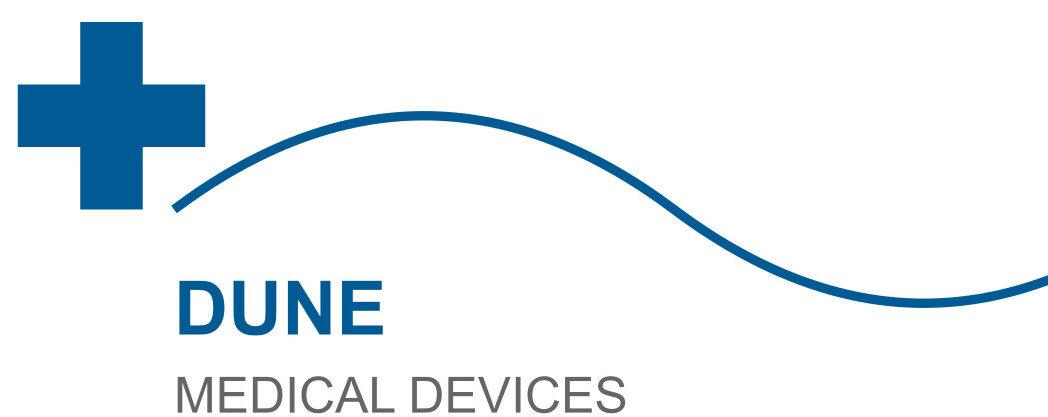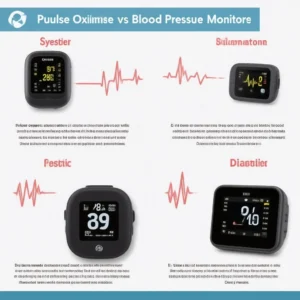Can a Pulse Oximeter Measure Blood Pressure? Separating Fact from Fiction
A Comprehensive Guide to Pulse Oximeters and Blood Pressure: Can an Oximeter Detect Blood Pressure?
In an era where personal health monitoring has become a cornerstone of preventative care, a new generation of smart health devices has found its way into homes around the globe. Among these, the pulse oximeter stands out as a simple yet powerful tool for tracking vital signs. It’s a device praised for its ability to quickly and non-invasively measure blood oxygen saturation (SpO2) and pulse rate. However, as these devices have become more common, a fundamental question has emerged: can an oximeter detect blood pressure? This question, born from a desire to consolidate health monitoring into a single, convenient device, has led to a great deal of confusion.
This extensive guide will serve as a definitive resource to demystify the roles of pulse oximeters and blood pressure monitors. We will delve deep into the science behind each device, explore their distinct functionalities, and address the common misconceptions that often blur the lines between them. By the end of this article, you will have a crystal-clear understanding of what each device is designed to do, why they are not interchangeable, and how to effectively use them as part of a holistic approach to your health.
The Anatomy of a Pulse Oximeter: What It Measures and How It Works
To understand the limitations of a pulse oximeter, we first need to appreciate its specific design and purpose. A pulse oximeter is a small, electronic device that typically clips onto a part of the body with a good blood flow, most commonly a finger, toe, or earlobe. Its primary function is to provide a snapshot of two key physiological metrics that offer insight into a person’s respiratory and cardiovascular health.
The two main measurements a pulse oximeter provides are:
- Oxygen Saturation (SpO2): This is the most crucial reading. It represents the percentage of hemoglobin in your red blood cells that is saturated with oxygen. Healthy individuals typically have an SpO2 reading of 95% or higher. A reading consistently below 90% is a cause for concern and may indicate a need for medical attention. This measurement is vital for managing conditions like chronic obstructive pulmonary disease (COPD), asthma, and sleep apnea.
- Pulse Rate: Also known as your heart rate, this metric measures the number of times your heart beats per minute (bpm). A pulse oximeter calculates this by analyzing the pulsing blood flow in your capillaries. A normal resting heart rate for an adult is typically between 60 and 100 bpm.
The technology behind a pulse oximeter is both elegant and simple. It relies on a principle called photoplethysmography (PPG). The device emits two types of light—red light and infrared light—through the tissue. Oxygenated and deoxygenated hemoglobin absorb these light wavelengths differently. By measuring the amount of light that passes through the tissue and is detected on the other side, the device can calculate the ratio of oxygenated to deoxygenated hemoglobin, thereby determining your SpO2 level. The pulsing nature of the blood flow, caused by each heartbeat, also allows the device to measure your pulse rate.
The Fundamental Question: Can a Pulse Oximeter Detect Blood Pressure?
The short, direct, and unambiguous answer is no. A pulse oximeter is not equipped to measure blood pressure. The confusion often arises because both devices are used to assess cardiovascular health. However, they are designed to measure entirely different physiological phenomena using completely different technologies.
Here is a detailed breakdown of why an oximeter cannot measure blood pressure:
- Measuring Different Metrics: The most important distinction is what each device is designed to measure. A pulse oximeter measures the percentage of oxygen in the blood and the rate of the heartbeat. A blood pressure monitor, on the other hand, measures the force of blood pushing against the walls of your arteries. It provides two distinct readings: systolic pressure (the pressure when your heart beats) and diastolic pressure (the pressure when your heart rests between beats), expressed as a fraction like 120/80 mmHg. There is no mathematical or physiological way to derive blood pressure from SpO2 and pulse rate readings alone.
- Different Technological Foundations: The technologies used by these two devices are worlds apart. As we’ve established, a pulse oximeter uses light absorption (PPG) to analyze the color of the blood to determine oxygen saturation. In contrast, a blood pressure monitor, whether a traditional sphygmomanometer or an automated digital version, uses an inflatable cuff to temporarily constrict the artery. The device then measures the pressure in the artery as the cuff slowly deflates. This process directly measures the arterial pressure and is the only reliable way to get a blood pressure reading outside of an invasive procedure.
- No Direct Correlation: While a person with a severe health condition might have abnormal readings on both devices, there is no direct causal link between the two metrics. For instance, a person could have perfectly normal SpO2 and pulse readings but suffer from dangerously high blood pressure (hypertension). Conversely, someone could have a low SpO2 level (hypoxia) due to a respiratory issue, but their blood pressure could be within a normal range. It is a common myth that a high pulse rate automatically means high blood pressure. While stress or anxiety can elevate both, they are not directly proportional. A trained athlete, for example, might have a very low resting pulse rate but a normal blood pressure reading.
Debunking Common Misconceptions: Oximeters and Blood Pressure
The rise of home health monitoring has inadvertently led to several widespread misconceptions. Understanding these can help you use your devices correctly and prevent potential health risks.
- Myth 1: An Oximeter Can Replace a Blood Pressure Monitor. This is perhaps the most dangerous misconception. Because they are both small, electronic, and measure cardiovascular-related stats, some people believe they can use one in place of the other. This is incorrect and could lead to someone missing a critical sign of hypertension, a silent killer that often has no symptoms. Both devices are valuable, but they are not interchangeable.
- Myth 2: A High Pulse Rate Always Means High Blood Pressure. As mentioned earlier, this is a flawed correlation. Many factors can influence your pulse rate, including exercise, emotional stress, caffeine consumption, dehydration, and even certain medications. A high pulse rate is not a reliable indicator of high blood pressure, and relying on this myth could lead to misinterpretation of your health status.
- Myth 3: Oximeters are a Complete Picture of Cardiovascular Health. While an oximeter provides crucial information about oxygenation and heart rate, it is just one piece of the puzzle. It does not provide information about blood pressure, blood glucose levels, cholesterol, or other important cardiovascular markers. A comprehensive view of your health requires multiple data points and, most importantly, professional medical advice.
- Myth 4: The Oxygen and Pulse Readings on an Oximeter are Directly Related. The pulse rate is a result of your heartbeat, which is necessary to circulate oxygenated blood. However, the two measurements are independent. Your oxygen saturation can remain stable while your pulse rate fluctuates significantly, and vice versa.
The Right Tools for the Job: Monitoring Your Health Effectively
Since an oximeter cannot measure blood pressure, it is essential to use the correct tools for each job. Understanding the proper use of both devices is key to a proactive approach to your health.
How to Accurately Monitor Blood Pressure
If you need to monitor your blood pressure at home, a dedicated blood pressure monitor is the only reliable option. To get the most accurate readings:
- Invest in a Quality Device: Choose a monitor that has been clinically validated. The cuff size is also extremely important; a cuff that is too small or too large can give inaccurate readings.
- Follow Proper Protocol:
- Find a quiet place to sit and relax for at least five minutes before taking a reading.
- Sit with your back straight and your feet flat on the floor, uncrossed.
- Place your arm on a table or flat surface so that the cuff is at heart level.
- Ensure the cuff is placed on your bare arm, not over clothing.
- Avoid talking, moving, or drinking caffeine for 30 minutes prior to the measurement.
- Track Your Readings: Keep a detailed log of your readings, noting the time of day you take them. This information is invaluable for your healthcare provider to identify trends and make informed decisions about your treatment plan.
How to Effectively Use a Pulse Oximeter
While it can’t measure blood pressure, a pulse oximeter is an invaluable tool for monitoring respiratory health. To get the most accurate readings:
- Choose a Reputable Device: Not all oximeters are created equal. Opt for a device with a strong reputation for accuracy.
- Position It Correctly: Place the oximeter on a finger that is clean and free of nail polish or artificial nails, as these can block the light and skew readings. The oximeter should fit snugly but not so tightly that it restricts blood flow.
- Remain Still: Movement can interfere with the sensor’s ability to get a stable reading. Try to keep your hand and finger still for the duration of the measurement.
- Monitor Trends, Not Just Single Readings: A single reading is a snapshot. What’s more important is a trend of your readings over time. Keeping a log can help you and your doctor identify any patterns that may signal a developing issue.
When to Seek Medical Advice
While home monitoring is a powerful tool, it should never replace the advice of a medical professional. Knowing when to escalate a concern is a critical part of self-care.
You should consult a healthcare provider if you notice:
- Consistently low SpO2 readings (below 90-92%).
- Irregular or very high/low pulse rates that are not related to exercise or stress.
- Symptoms such as shortness of breath, chest pain, dizziness, or lightheadedness.
- Consistently high blood pressure readings from a blood pressure monitor.
Conclusion
So, can an oximeter detect blood pressure? The answer remains a definitive no. Pulse oximeters and blood pressure monitors are two distinct and valuable medical devices that serve entirely different purposes. The former measures oxygen saturation and pulse rate using light, while the latter measures arterial pressure using an inflatable cuff.
By understanding the unique capabilities and limitations of each device, you can make informed decisions about your health and use these tools effectively. Relying on an oximeter to check for blood pressure is a dangerous misconception that could lead to missing critical signs of a serious health condition. Instead, use each device for its intended purpose, and always consult a healthcare professional for a complete and accurate picture of your health. By doing so, you take an important and responsible step towards proactive health management.

